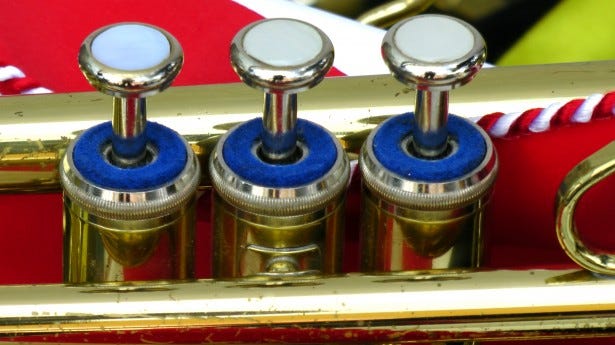Part 19 of the Oblique Strategies Series

This is part of a series, running through 2016, in which your faithful fool randomly selects one of Eno and Schmidt’s “Oblique Strategies” and writes a meditation upon it. For background on the series and the strategies, please read the series introduction. The Oblique Strategies are copyright Brian Eno and Peter Schmidt
About 14 years ago, as a fresh-faced undergraduate, I stumbled across the Tao Te Ching. It’s a classic of the Eastern philosophical canon, and if you haven’t read it, you should. And if my endorsement isn’t enough, consider this: most translations weigh in at fewer than 75 pages. It’s a quick read the first time around, but you will find yourself coming back to it again and again.
One of the themes in the book is one that actually isn’t unique to either it or the Eastern philosophical tradition: things are not what they appear to be. There is a deeper aspect of the reality we swim through — meaning beyond the hollow descriptions that we so clumsily affix to the world we know. So the labels and roles that people self-apply and that others apply to them, are likely not the real story. More interestingly, the instruments we use to do our work — whatever that work may be — are also more than they appear to be.
The Instruments You Use
Consider a pencil. A pencil has a role that is assigned to it: make marks on surfaces. The other end of it is an eraser. The eraser’s assigned role is to take away marks. Essentially, the roles are for the lead to create and the eraser to destroy. Most people who pick up a pencil use it in this way. But consider what happens when you change the assigned roles. Use the eraser to create white space, and use the white space to make an image.
This isn’t a new idea by any measure — artists have been doing it for years. But someone had to do it first. Someone had to look at the pencil and think perhaps the eraser is not exactly what it seems. More simply, someone had to understand the agreed upon role of an instrument and change it. The destructive became the creative. Things were changed forever.
So what instruments in your life and work are going unexamined? What things are arranged in such a way that you haven’t thought to look at their roles differently? At a higher level, what do you perceive as the role of your work itself? Think about it: the best art is itself an instrument. It is an instrument for change, an instrument to evoke a reaction, to arouse emotions previously hidden — in persons and in society as a whole. But each work does this in a different way, by tugging on different heartstrings. Which heartstrings are you looking to tug?
Art as an Instrument
The work you do itself does work. It works on the thoughts and feelings of those who come into contact with it. The things you create themselves create. They create new movements and conversations. That all starts with whatever instruments you pick up, and how you choose to use them. This is not limited to music or visual arts. Words, too, are instruments. The word “clearly” has a different sound, and evokes a different reaction than “unequivocally”. Choosing one over the other makes a difference; it changes the work. The syntactical symphony adopts a new, perhaps richer tone as a result of the linguistic instruments you choose to employ.
All this is to say that so much in the creative process is about asking questions, and trying out new and interesting answers to those questions. When the question is what is the role of the instruments I’m using? the new and interesting answer can merely be: whatever the role, I’m going to try changing it. You might fall flat (and it’ wouldn’t be the first time), or you might just catch a tailwind that pushes you to create that innovative piece. You just don’t know until you begin trying things out.
Godspeed.
Originally published at Your Fool Laureate
